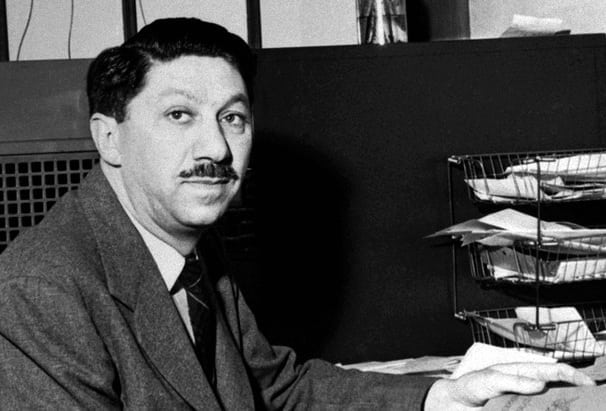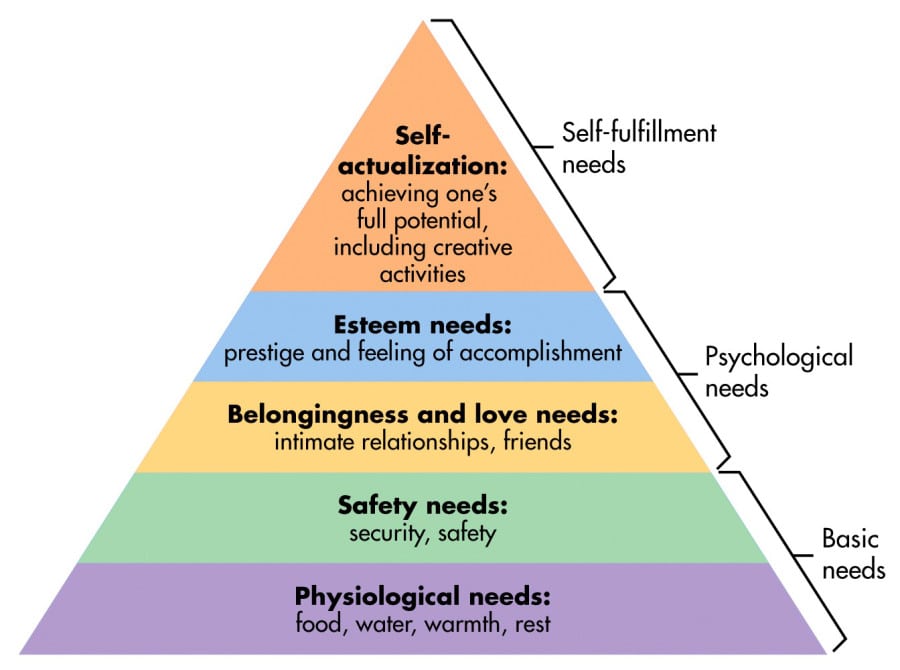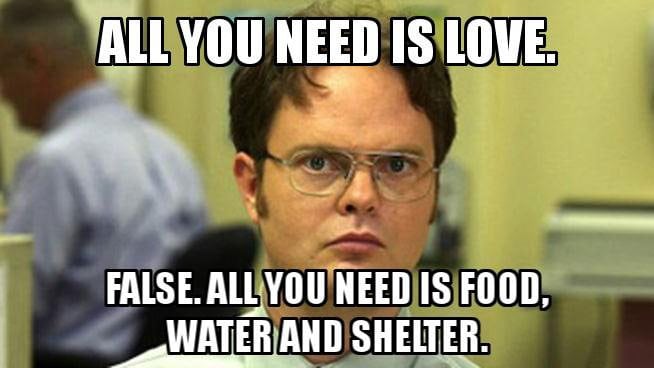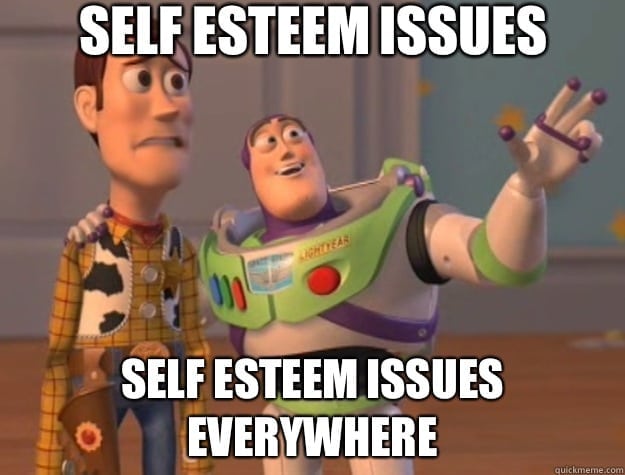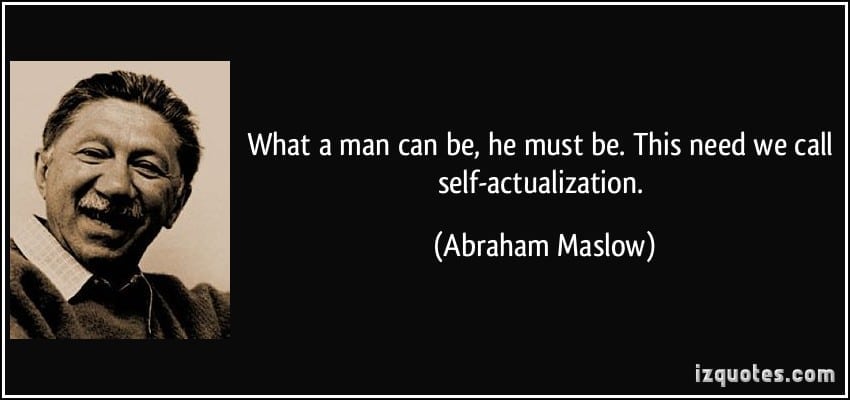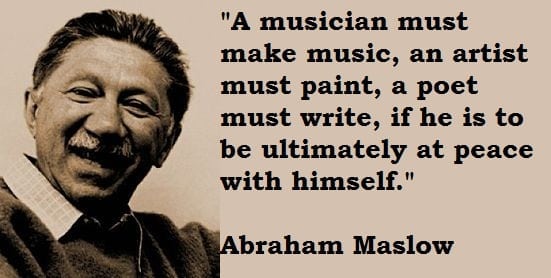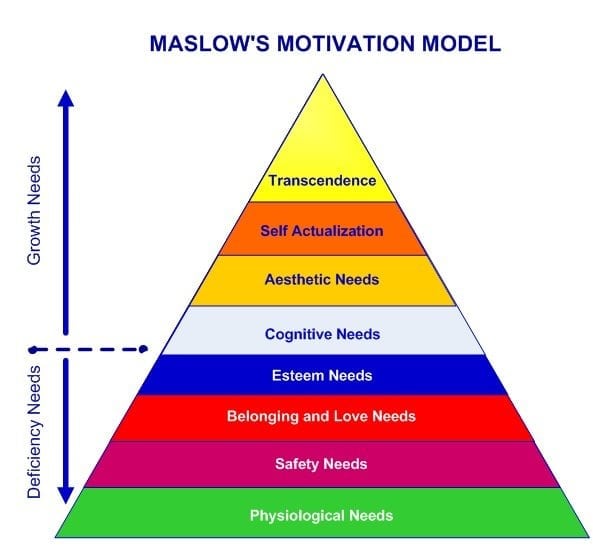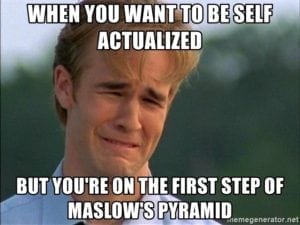Humans; complicated organism structures, over 7.4 billion currently living on Earth – each and every one of them unique in their own way of thinking and behaving. The philosophers and great minds alike, dare to ask the question: “Why do humans behave and do the things they do?”, and in 1943, Abraham Maslow answers this question with his theory on the Hierarchy of Human Needs.
Maslow’s Hierarchy of Human Needs Theory was a breakthrough in the world of Psychology, and the still developing concept of Motivation. The theory, in essence, pointed to different stages of needs in humans, along with the respective motivation to fulfill the said need, and thus, this theory is also known as Maslow’s Theory of Motivation.
The Abraham Maslow Theory consists of a five-story pyramid. Each story or level consists of a category of need, along with the bottom-most being the most immediate need of a human, followed by the one above it and so on. This basically aimed to discuss and point out that on each level, the person’s primary motivation and behavior results from the thirst to satisfy that need. The stages include:
- Physiological Needs.
- Safety Needs.
- Social Needs.
- Esteem Needs.
- Self-actualization Needs.
The first four (or bottom four, according to the pyramid) are known as the Deficiency Needs, while the fifth is known as Growth Needs.
Deficiency Needs and Growth Needs:
As we know, the bottom-most four needs are also known as Deficiency Needs. This is because a deficiency in the satisfaction of these need will lead a person feeling anxious and “not whole”, as these needs are necessary to sustain a peaceful, pleasant and positive living experience.
As for the Growth Needs, the last need is termed as this due to the fact that it highlights an inner growth in the perception of one’s capabilities, skills, etc. This need is not necessary to sustain a healthy living experience, but rather it requires a higher mental capability.
A Breakdown of All Five Stages:
1) Physiological Needs:
The first or the bottom-most stage in the pyramid is termed as the Physiological Needs or Basic Needs. It consists of all those basic survival needs which include food, water, air, warmth, etc. Without the satisfaction of these needs, human survival will be at a continuous risk, and thus, this is the most immediate need, thirsting for immediate satisfaction in humans.
2) Safety Needs:
The second need, listed in Maslow’s theory of motivation, is the Safety Need. This need, as the name suggests, is the need for safety or security of the individual, including laws, order, stability, etc. In work-places it can also include job-security, etc.
3) Social Needs:
Man is a social animal, and so, it is a great need of ours to socially interact with others, creating bonds like friendships, relations, intimacy and being “a part” of a group. For this reason, it is also termed as Belongingness Need.
4) Esteem Needs:
This refers to both our self-esteem and esteem from others. Our need of self-esteem includes confidence, dignity, independence, a pleasant sense of the self, etc, while our need for esteem from others include respect, a good reputation, etc.
5) Self-actualization Needs:
This refers to the need for one’s personal growth. It includes realizing one’s full potential and capabilities and working towards achieving them.
Maslow’s Pyramid And It’s Relation To Motivation:
Up till now, we have gathered that Maslow’s theory highlights human needs in stages, however, the question remains: How is it linked to Motivation in Psychology?
First, lets look at what motivation is: Its a driving force which pushes us forward to accomplish a certain task. Over the years many psychologist and theorists have tried explaining this phenomena, and thus many theories for it were presented, which are now known as the Theories of Motivation. One of the theories of motivation is Maslow’s Hierarchy of Human Needs Theory, and comes under the section of Content Theories which basically aims to theorize what motivates us.
We have seen and discussed every stage present in Maslow’s Pyramid, individually; we have stressed on how these needs demand to be satisfied as they are important to sustain a healthy living experience. So the force which pushes us forward to meet these needs in each stage is known as Motivation, and thus, because this theory highlights exactly what is motivating us in which stage of life, it comes under theories of motivation, and more specifically its Content Theories.
Stages And Their Respective Motivational Forces:
A person stuck in the first stage, Physiological or Basic Needs, will be constantly motivated to somehow acquire shelter, food, water, etc, as he is aware of the needs for survival. Here, the individual wouldn’t be motivated to satisfy other needs like social and esteem needs, because as explained above, his main concern will be for the stage he is in.
An individual in the second stage of Safety Needs, will be motivated to acquire safety of his own personal self.
The motivational force of a person stuck on the third level, Social Needs, will revolve around trying to establish healthy relations with others as friends and potential romantic partners, along with a motivation to acquire intimacy and sexual relations.
A person stuck on the fourth level, Esteem Needs, will be motivated satisfy his need for respect, a good reputation, self-confidence, etc and so he will engage in actions which strengthen the above said needs.
Lastly, a person stuck on the last level, Self-Actualization Needs, will be motivated to discover his inner-self; his potential and capabilities. Once discovering, the person will be motivated towards the satisfaction of excelling his potential.
*Additional Stages Added to Maslow’s Pyramid:
In the more updated version, three more stages are added in Maslow’s theory, in the section of Growth Needs, which include: Cognitive Needs, Aesthetic Needs and Transcendence Needs.
We conclude that Maslow’s Theory on Hierarchy of Human Needs is a break-through in the world of Psychology, and with enough understanding, perhaps we can accurately pin-point our current needs and motivational forces, and use it to our advantage.


